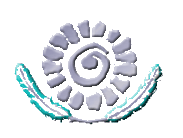 |
||||||||||||||||||||||||
|
|
||||||||||||||||||||||||
 |
||||||||||||||||||||||||
 |
||||||||||||||||||||||||
|
||||||||||||||||||||||||
 |
 |
|
More than 65 million Americans suffer back pain every year. The only pain reported more frequently than back pain is headaches. Back pain is the second most frequent cause of absence from work in adults under the age of 45 and a common cause of disability. It costs the US tens of millions of dollars in lost productivity and worker's compensation. The pain may range from a dull ache to absolute agony. It is the number one problem treated by orthopedic surgeons. It may be caused by injury or as a result of the repetitive stress placed upon it by improper posture, movement and sleeping. Many experts blame increasingly sedentary lives as a major factor in back pain. Lack of movement causes the back to lose flexibility and be more susceptible to injury. Almost all activities needed for daily living require proper functioning of the spine. The lumbar or lower part of the spine connects the upper body, which includes the chest and arms, to the lower body. It provides both the mobility to bend, turn and twist and the strength to walk, stand, and lift. Pain in this area of the back may prevent a person from both working and enjoying life. The spine is a complex structure of vertebrae, disks, spinal cord, and nerves. There are:
The bones are given code numbers to indicate where they are located in the spine.
The spine has a natural "S" shape with a hollow in the base of the neck and another in the small of the back. The natural curves must be supported and maintained for proper balance and health. Standard medical treatment will usually begin with x-rays of the spine to diagnose arthritis or bone diseases. There may then be a CT scan (computerized tomography scan) or MRI (magnetic resonance imaging) to diagnose injuries to the soft tissues or disks. They may also do a bone scan to assess bone activity or EMG (electromyography) to determine of there is nerve or muscle damage. Sprains and strains are the most common back injuries. The muscles may become strained from overwork or improper lifting of weights. They may also go into spasm after strenuous activity or a prolonged period in an awkward position. The ligaments in the low back interconnect the five vertebral bones to provide support and stability for the lower back. A sprain may occur if a sudden forceful motion injures a stiff or weak ligament. Many people are diagnosed with degenerative disk disease or arthritis as a factor of aging. These may cause stiffness, pain, and inflammation in the joints. They may also progress to the point where pressure is placed on nerves, which may then cause pain to be felt in other areas. Disks are composed of a nucleus surrounded by a tougher elastic and fibrous portion called the anulus. In children and young adults the nucleus is very soft like jelly. As a person ages, the nucleus becomes harder and begins to resemble the anulus. With age, cracks or fissures may occur in the anulus allowing the nucleus to push out through them. This is called a ruptured, herniated, prolapsed or slipped disk. If the protruded disk presses on a nerve, the pain may be felt in the leg or other areas. Osteoporosis is a condition in which the bones lose strength and density. This may cause the spine to become fragile and be more easily injured. In advanced stages of the disease, bones may break from the stress of doing daily activities. While this affects all the bones in the body, since the spine is so critical to movement and function, is often the site of pain in this disease. Proper posture and alignment may help to decrease the risk of injury as the disease progresses. With the introduction of backpacks to carry schoolbooks, 30% – 50% of all 15- to 16-year-olds now suffer from back pain. More than 7277 5- to 15-year-olds a year are treated in emergency rooms for backpack related injuries. Forty million children now use backpacks and many of these packs are greater than 15% of the child's weight. Most are carrying weights that are 30% of their body weight. By the age of 18 over 60% of children have experienced at least one episode of back pain. Backpacks that are too heavy cause the child to hyperextend or arch the back or to lean the head and trunk forward to compensate for the excessive weight. This causes stress on the muscles in the neck and back which increases fatigue and the possibility of injury. If the backpack is used improperly, such as only using one strap, this will cause the child to lean to one side to compensate and pull the spine out of alignment, which affects the fluid content and shock absorption abilities of the disks. They also alter the mobility of the spinal bones and can lead to restricted movement. In addition, the shoulder straps may dig into the shoulders and affect circulation and the nervous system. A child who begins with poor posture is at even greater risk of back problems. As these children become adults, they will suffer increasing amounts of back pain due to the abuse their bodies suffered during their formative years. These early injuries to their developing bodies will lead to greater numbers of adhesions and fascial restrictions than are seen in people from past generations. Standard medical treatment usually begins with medication. It may be muscle relaxants, analgesics, anti-inflammatory agents, anti-depressants or narcotics for pain, or a combination of these drugs. Steroid injections may also be prescribed. Treatment may also include ice or heat and some type of physical therapy. Many people turn to chiropractic or osteopathic manipulation for back pain. While these approaches attempt to restore the bones to proper alignment, there is no consideration given to the possible presence of fascial restrictions. Since the fascia has a tensile strength of 2000 pounds, it may be pulling the bones out of alignment and preventing proper posture and alignment. Forcing the bones back into place will only cause the fascia to resist that force and tighten even more to pull the bones out of alignment again. Hence a person may have the same adjustment done over and over again only to have it move out of place in a short period of time. In severe cases or cases that do not respond to other treatment, surgery will be performed. Back surgery to remove herniated disk is among the most frequently performed operations in the US. However, the results are not significantly better than those obtained with other methods of treatment. None of these approaches are effective for every person or every case of back pain. None of them addresses fascial restrictions or adhesions that may be pulling the bones out of alignment or putting pressure on muscles, ligaments and nerves. None of them works to balance the body and improve posture so that exercises may be done properly to prevent further injury. At Windsong Therapy and Wellness, we will first work to remove fascial restrictions and adhesions to balance and align the body. This will often begin to immediately reduce the level of pain. A program will be tailored to the lifestyle of each individual patient. Exercises are useless if a patient does not have the time to do them or the lifestyle to support them. |
| [Home] |
|
This website last updated on 31 July 2010 This website is entirely funded by Windsong Therapy and Wellness, Inc. |
|
Disclaimer: Confidentiality of data relating to individual patients and visitors, including their identity, is respected by this Web site. The owners of this Web site undertake to honor or exceed the legal requirements of medical / health information privacy that apply in Texas and the United States. The information on this Web site is Copyright © 1999-2008 Windsong Therapy and Wellness, Inc. Please obtain permission from Windsong Therapy and Wellness, Inc. before reproducing any information from this Web site. |